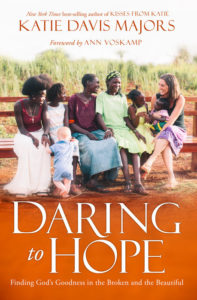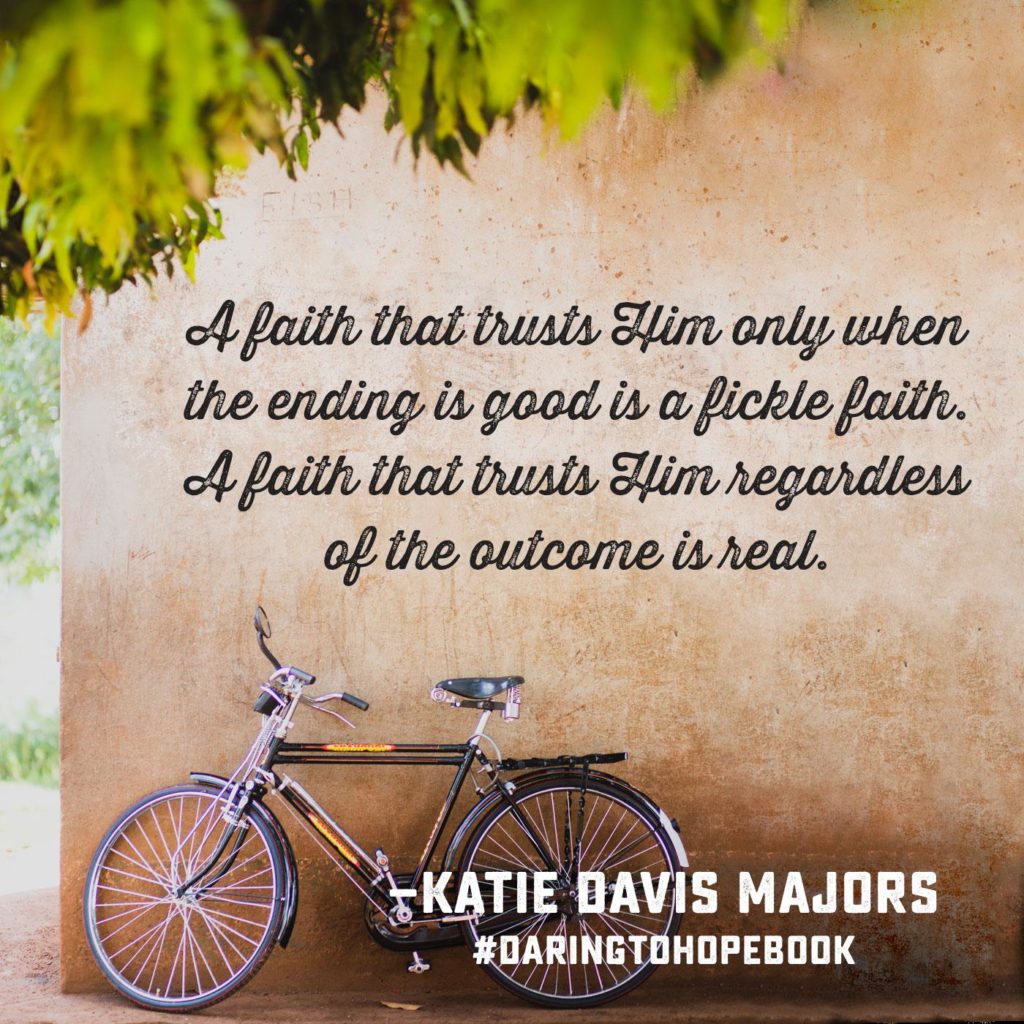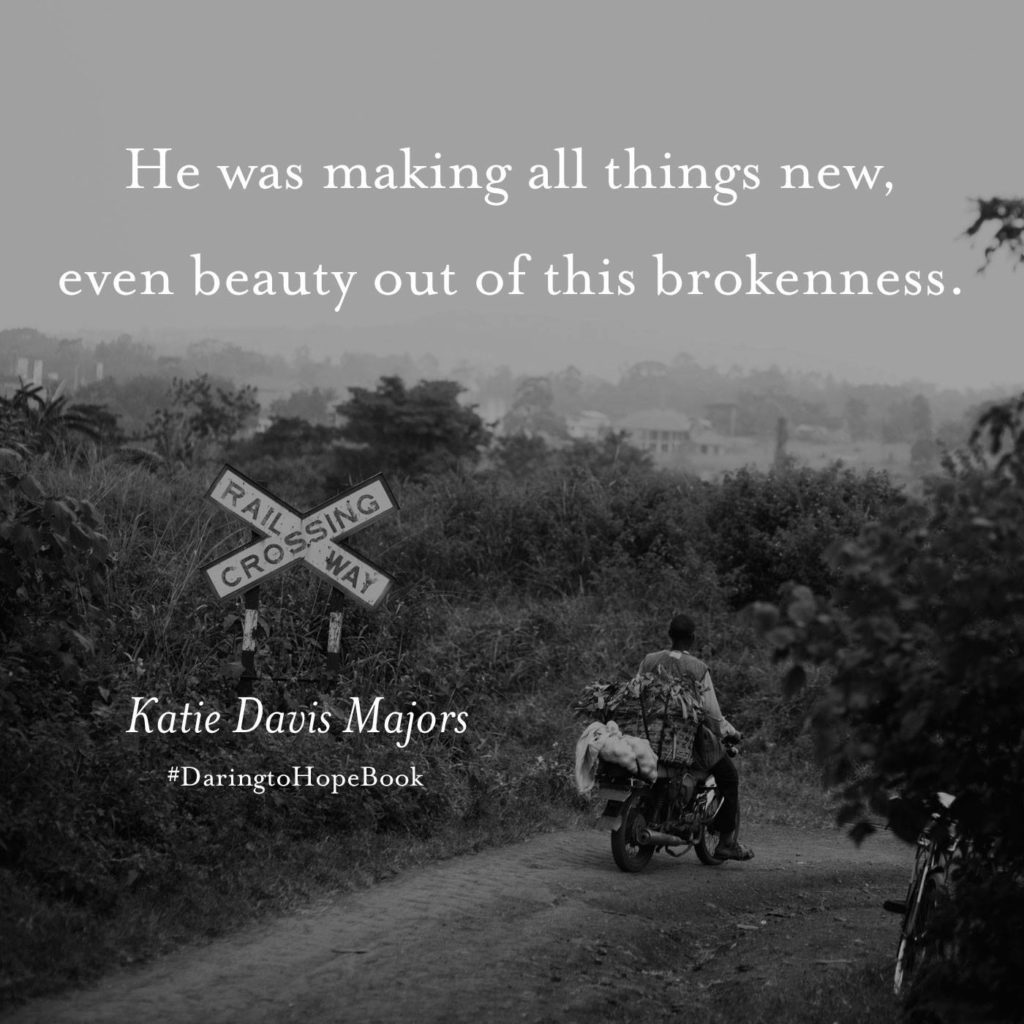 It is tempting in Christian circles to hold up missionaries and other “heroes of the faith” as prime examples of every spiritual ideal. A young woman who moves to Uganda, starts a ministry, and adopts a baker’s dozen of daughters could easily be thought of as perfect or at least some kind of holy that is unattainable to the rest of us.
It is tempting in Christian circles to hold up missionaries and other “heroes of the faith” as prime examples of every spiritual ideal. A young woman who moves to Uganda, starts a ministry, and adopts a baker’s dozen of daughters could easily be thought of as perfect or at least some kind of holy that is unattainable to the rest of us.
But Katie Davis Majors, in her new book Daring to Hope: Finding God’s Goodness in the Broken and the Beautiful, assures readers that she wrestles with faith and doubt, just like the rest of us.
Ultimately, our hidden reach for God counts so much more than our public one. Some people may look at my life and say how amazing I am or what a radical Christian I am, just as some people may praise you because you seem to have it all together, but what really counts will be the quiet devotion practiced in our own homes. What will matter most at the end of our lives are these people right in front of us who get to see all of it, the happy stories and the tragic ones, the pretty good parts of us and the ugliest parts of us. At the end of time all that will count is that we lived the Gospel with our very lives, that we paid attention to the people God gave us and dwelt knowledgeably and hospitably in the place to which He called us. (p. 100)
In this follow-up to her popular Kisses from Katie, Majors recounts many stories of hope and heartbreak in her Ugandan neighborhood, how saying “yes” to God and the people He brings her doesn’t always end happily, the way she thinks it should. She shares with readers what she has learned about God and His faithfulness in times like these and emphasizes the importance of wrestling with God through these circumstances.
She writes:
I think we often look at our lives and see the barren places. It seems the garden is empty, plans dead and withered, dreams laid waste. It is easy to believe the lie that the good is over and gone and maybe God is done working here, in me and in you. … Could we rejoice in the waiting? Could we believe that God who brought Jesus out of the black of the tomb and green shoots out of the hard earth will bring beauty out of our barren seasons? Could we know that beauty is in this whole process, the growing and the pruning and even in the waiting, not just the part with the beautiful flower? (p 69)
The stories and lessons in this book are accessible to anyone desiring to live a life of faith where they are. It is not a book only for missionaries or spiritual leaders or young people. It is for anyone who wonders if hope is worth it when the outcome is unexpected.
You can hear from Katie in the book trailer about what this book means to her, here:
And if you want to read more, check out Katie’s post on Ann Voskamp’s blog.
(Disclosure: I received an advanced copy of the book from the publisher. Review reflects my honest opinion.)



